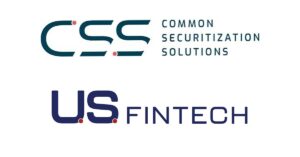Lenders verify a borrower’s income and employment information for many types of loans. This helps the lender to better understand an individual’s propensity to repay loans while mitigating risk. Lenders must ensure that the verification method they use provides trusted data and allows them to obtain this information both securely and efficiently.
Today’s digital landscape has created a particular expectation among consumers regarding their interactions with businesses and industries. Many modern consumers expect secure, seamless and streamlined lending experiences. This is especially true when consumers are being asked for personal data such as income and employment information.
Unfortunately, these consumer expectations are not always met. Some financial institutions utilize income- and employment-verification methods that can prolong the process. This can consume excessive amounts of time and require the consumer to be directly involved in the verification process.
Bank transaction data, user-provided payroll credentials, and paper pay stubs and W-2s are all forms of data that can be used for verifying income and employment. A loan, however, is placed on hold until all verification requirements are completed. The estimated time to return this data to mortgage lenders — and the originators who work with them — can sometimes be days, depending on the borrower’s completion rate and participation.
Faster decisions
Borrowers and lenders should consider leveraging solutions that offer seamless income and employment verification. Utilizing automated digital verification solutions allows for faster lending decisions than with other verification methods, creating an easier verification process for borrowers and lenders.
One significant advantage of instant verification is that it does not require clients to provide private bank account credentials, or to create separate accounts and manage the process themselves. It also lessens the time it takes for lenders to obtain copies of necessary documents.
Under the Fair Credit Reporting Act, lenders must have what is called a “permissible purpose” to obtain employment information. Additionally, consumers can give lenders permission to obtain income information concurrently with their loan application. This means that mortgage lenders can pull an automated employment or income report with little hassle for the borrower or their company.
Tedious tasks
Generally, financial institutions have had preferred ways of managing requests to verify an individual’s employment or income. A lender may handle these requests directly or turn to third-party applications for verifications.
These third-party application processes may require more steps than are necessary in the instant verification process. For example, both bank transaction data and consumer credentialed data ask for consumers to permit access to data at the time of loan application. Consumers are then prompted to access third-party applications to search and link to their financial institution. This may pose several challenges and potential risks.
Third-party applications often ask consumers to provide a username, password or even their bank account number. Following loan approval, these applications may continue pulling and sharing data for both the consumer and the financial institution, unless the consumer proactively revokes access to their bank accounts, which can be burdensome. When working with third-party applications, consumers may not be able to identify exactly what data within their account was accessed.
Granting access to consumer data in this way can be a security risk, especially if consumers share their login credentials for a bank or payroll account. It also makes clients take a more active role in the verification process by making it mandatory for consumers to set up a separate account within a third-party platform.
Employer- or employee-provided verifications also run into several issues. Employers, in some cases, might manage employee requests for verifying income and employment. If an employee decides to apply for a loan, a lender might have to request proof of employment or income directly from an employer. This could lead to a stalled verification process if an employer does not respond immediately to the verification request. Similarly, when employees are responsible for handling their own verification requests, the manual processes can become tedious, especially if an employee must gather proof of employment, or proof of income from pay stubs, W-2s or tax returns.
●●●
Instant and trusted employment and income verification can help a mortgage lender receive timely and up-to-date information. In today’s digital world, lenders should take full advantage of solutions that streamline the decisionmaking process, mitigate risk, and provide borrowers with a faster and more frictionless verification process. ●
Author
-

Joel Rickman is senior vice president of verification services at Equifax, where he serves as general manager for a $1 billion line of business for the company. Rickman plays an instrumental role in shaping the future of The Work Number, an industry-leading income- and employment-verification product. His team helps clients utilize the data across the lending cycle to optimize credit decisioning, underwriting, portfolio review and recovery.
View all posts






